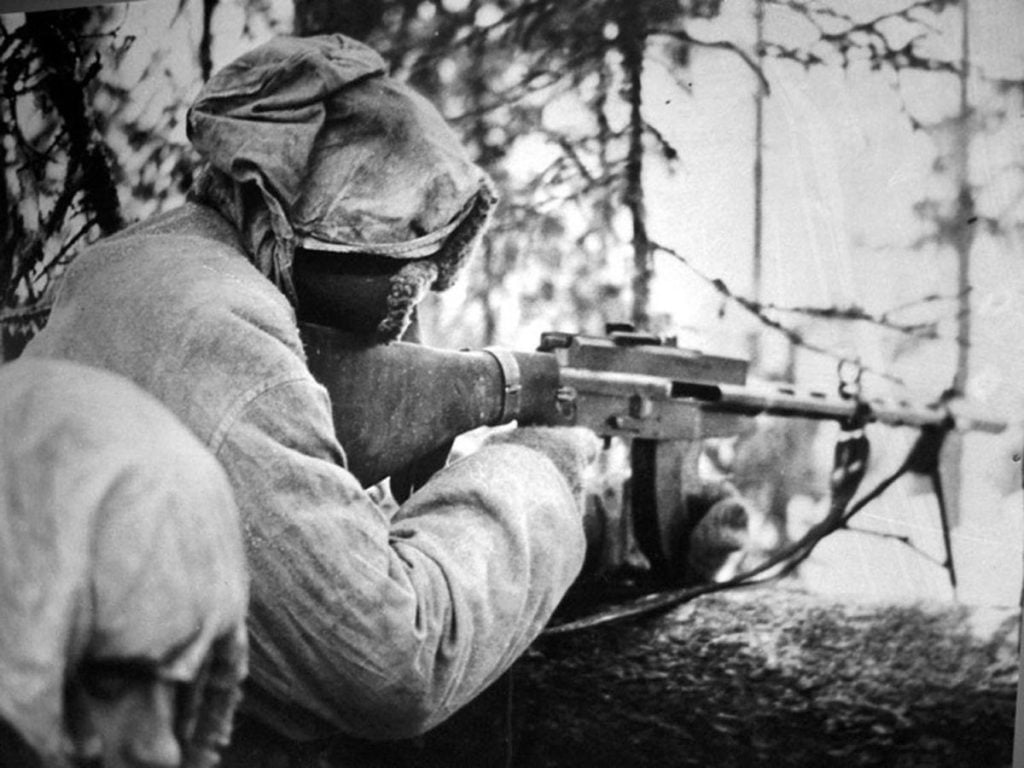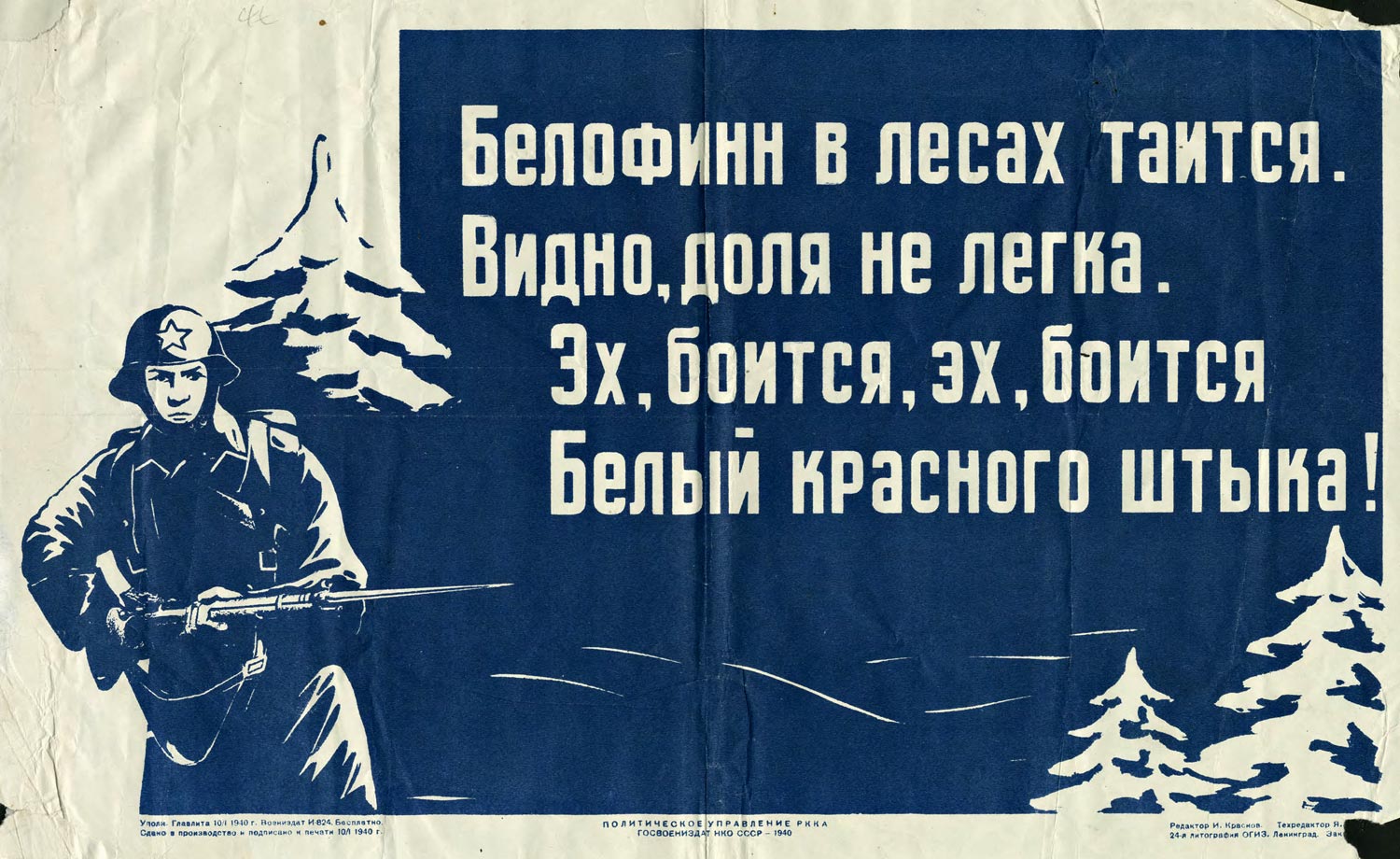One of the brightest legends of the Soviet-Finnish war of 1939–1940 was the “cuckoos” - Finns allegedly camouflaged in the trees and opened fire on the Red Army soldiers. We checked whether they actually existed.
Materials about “cuckoo” snipers can be found both in the media and on social networks. For example, this topic dedicated publication on the website of the TV channel “Zvezda”, “cuckoo” is also mentioned by the authors BBC and portal "Russian Seven". Stories about Finnish snipers on social networks also attract a lot of attention, in particular in "VKontakte", Facebook And LiveJournal, and the rollers are on YouTube get up to half a million views.
When and who first publicly used the term “cuckoo” during the Winter War has not yet been established. However, it was used quite often by authors of memoirs about that conflict. In particular, Finnish machine gunners shooting from trees described junior political instructor I. Kulypin in the collection “Battles in Finland”, published in 1941:
“We notice: bullets are falling around us. Where are they from? Suddenly the machine gunner falls. We ask:
-Where are you wounded?
“In the back of the head,” answers his comrade, leaning towards him.
This means they are shooting from the rear. We begin to inspect the trees. The branches are thick and covered with snow. I notice that the branches of one of the fir trees are swaying slightly. I peer through the scope of a sniper rifle and see: a “cradle”, and on it there are legs in piexes. I'm shooting. A man falls from a tree. We run up: a white Finn with a machine gun...
Soon we discover another machine gunner, we shoot him too, but the killed White Finn drops the machine gun, but does not fall himself. It turns out that he was tied to a tree with a rope around the waist, so that, without holding on with his hands, he could freely walk along the “cradle” around the trunk...
At that time we did not yet know that such a method of war was a system that the enemy would use along the entire front.
Another time, when the “cuckoos” began to fire at us from machine guns, Lieutenant Odinets ordered to dismember and open fire from light machine guns. This fire immediately shot down three White Finns, and the rest fell silent. But as soon as the company got up and moved through the forest again, the White Finnish machine gunners climbed onto other trees and began shelling again. We also had to act differently. They decided to allocate special soldiers with a light machine gun, who combed the forest, moving ahead of the company. The “cuckoos” disappeared, and we moved on without delay.”
The actions of disguised Finnish snipers, riflemen, submachine gunners and even light machine gunners who conduct surprise fire on Red Army units are noted by at least eight authors of the memoirs published in this collection. However, we are not always talking specifically about snipers shooting from trees. So, political instructor Atibeev and lieutenant Tolmachev described shooting from positions on the ground.
Soviet military personnel and propagandists portrayed leaving soldiers in the rear for surprise shooting in order to disorganize and panic the ranks of Soviet troops advancing in the forests as a manifestation of the enemy’s cunning and guerrilla tactics. The Red Army countered them with collectivism, increased vigilance and well-aimed return fire.
It is noteworthy that in the memoirs of participants in the fighting on the Karelian Isthmus, “cuckoos” called also snipers and machine gunners, camouflaged not only in the rear of the Soviet troops, but also on their own front line.
"Cuckoos" are also found in the marshal's memoirs Kirill Meretskova, commander of the 7th Army in the Soviet-Finnish War, chief of artillery of the Red Army, Marshal Nikolai Voronov, Colonel General Andrey Rytov and other participants in the war.
Soon after the end of the Soviet-Finnish war, snipers sitting in trees “migrated” to the stories of the war correspondent, Soviet marine painter Leonid Sobolev. They are mentioned, for example, in the story "In the Forest": “In the coastal forest, swarming on every tree with snipers - that secret, hidden, invisible enemy - now direct fire shrapnel whistled between the branches. The gun brought by Savkin hit the forest point-blank. The shrapnel shook off layers of snow from the fir trees, cut down branches, knocked down people wrapped in white with machine guns like apples.” The writer seems to have mixed snipers and machine gunners.

Finnish historian Ohto Manninen, in turn, called the “cuckoos” one of the myths of the Soviet-Finnish war. In the article “So were there “cuckoos”?” (1995) he wrote: “The stories about the cuckoos caused surprise. No one has met such veterans who would remember how they climbed trees. <…> It seems unlikely that a soldier could be forced to climb a tree, since he should always be able to retreat. <…> Based on such stories about sudden attacks by the Finns, a legend arose that was passed from mouth to mouth until it found its way into political propaganda instructions. Thus, this myth, transmitted first by the Red Army soldiers who participated in the war, and then by other military personnel, entered historiography. This is how it was preserved in the memory of the Soviet people, although no one has yet seen a Finnish “cuckoo” that would actually sit on a tree.”
In April 1940 passed a meeting of the senior command staff of the Red Army dedicated to discussing the lessons and results of the Soviet-Finnish war. None of the five army commanders, two corps commanders, eight division commanders and two rifle regiment commanders who spoke mentioned the massive use of “cuckoos”.
Nevertheless, it is impossible to talk about the complete absence of such practice on the part of Finnish military personnel. Individual examples of enemy shooting from trees or sudden shelling by snipers and machine gunners can be found in three documents on the participation of units and individual units of border troops in hostilities, published in 1970 in the collection “Border Troops of the USSR. 1939 - June 1941." It is curious that in first In this case, the diary author does not name the enemy firing from the trees in any way, in second in the document the Finnish sniper is called a “grouse grouse”, and in third talking about “snipers with machine guns” shot down from trees.
In the documents of the Russian State Military Archive, reflecting the combat operations of units and formations of the Red Army on the Karelian Isthmus and other sectors of the front, cases of fire from trees at units advancing in the forest are rarely mentioned. Much more often we are talking about ambushes and sudden shelling of advancing or defending Soviet soldiers by small groups of the enemy, equipped with automatic weapons and penetrating into the rear of the troops advancing to the west. In particular, in the report of Army Commander 2nd Rank Mikhail Kovalev prepared in January 1940 to the People's Commissar of Defense Marshal Kliment Voroshilov indicated: “Losses are caused mainly by snipers, well camouflaged and often located in trees; small enemy groups flowing around the flanks and attacking from the rear.”
Individual episodes of the struggle of Soviet military personnel with enemy snipers and machine gunners are also reflected in the documents of some units of the Red Army. For example, in the combat log of the 97th Infantry Division of the 13th Army indicated, that its 69th Infantry Regiment was engaged in the liquidation of snipers and machine gunners on one of the Vuoksi islands on March 12.
Thus, the sudden opening of fire by well-camouflaged individual Finnish riflemen, snipers, machine gunners and machine gunners, as well as small groups of Finns on Red Army units was an element of the tactics of Finnish troops in wooded and swampy areas. Individual episodes of the use of this tactic were gradually reduced in collective memory to “cuckoos,” which even during the war were used to call Finnish soldiers who fired not only from trees, but also from well-camouflaged positions on the ground.
Half-truth
If you find a spelling or grammatical error, please let us know by highlighting the error text and clicking Ctrl+Enter.







